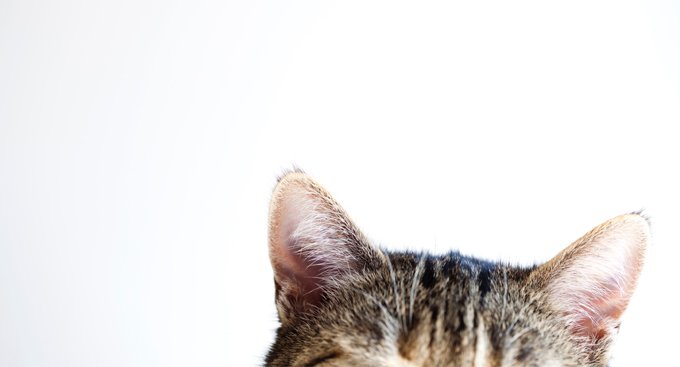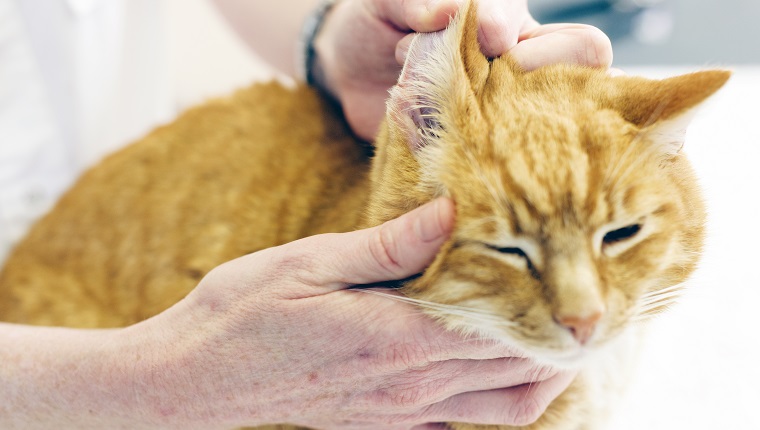We love our kitties’ adorable, fuzzy ears. So, of course, we want to keep them as healthy as possible.
Grooming is essential to providing good care for your cat, and looking after your cat’s ears is an important part of that grooming routine.
Here are a few tips and things you should know that will help you keep your cat’s ears in top shape!
Check Your Cat’s Ears Regularly
Make a habit of checking your kitty’s ears regularly. A normal, healthy ear will be clean, dry and free of pain. The skin should be smooth, without any scabs, sores, or red areas.
Abnormalities that you might see in your cat’s ears include:
- Redness or inflammation inside the ear canal
- Scabs or sores on or around the ears
- Discharge and/or an odor from the ears
- Swelling in the ear
In addition, if your cat is scratching at their ears or neck frequently, holding their ears at an abnormal angle, or has pain in their ears, they may have ear disease.
If you notice any of these symptoms, schedule an appointment with your veterinarian for an examination as soon as possible.
Diseases Of The Feline Ear

Ear mites are by far the most common disease of the feline ear. These are small insects that live inside of your cat’s ear and on their coat.
Symptoms that your cat may have ear mites include a black or brown discharge in your cat’s ear that resembles coffee grounds, itchy ears, and scabs or sores surrounding your cat’s ears.
If you suspect that your cat has ear mites, a visit to your veterinarian is in order. There are numerous remedies that may be used to treat ear mites, and your veterinarian will help you determine which is most appropriate for your cat.
Options include Revolution and Advantage Multi for cats. These monthly topical medications are frequently used to control fleas and heartworms in cats also. Your vet may suggest other options that you can apply directly to your cat’s ears to kill the ear mites.
Often cleaning the ears is recommended to remove debris that may be irritating for your cat. Sometimes, medications to help sooth the inflammation in and around the ears is necessary as well.
Though ear mites are the most common type of ear disease, cats can suffer from other disease as well. Bacterial infections, foreign objects, tumors, polyps, and allergies are other diseases that can potentially cause ear issues for your cat.
Cleaning Your Cat’s Ears
In many cases, your cat’s ears will remain clean and need very little care. However, if you need to clean your cat’s ears, proper techniques are important to avoid injuring your cat’s ear drum.
Numerous ear cleaning solutions are available. Consult your veterinarian if you are unsure which type is best suited for your cat.
Start by filling your cat’s ear canals with the ear cleaner, and then massage the outside of the ears gently. Use a cotton ball to swab the ear cleaner and debris out of the ear canal.
Never use a Q-Tip type cotton swab in your cat’s ear canal. These types of tools can damage your cat’s ear canal if used improperly.
Have you ever cleaned your cat’s ears? Do you check your kitty’s ears regularly to make sure they’re healthy? Let us know in the comments below!




